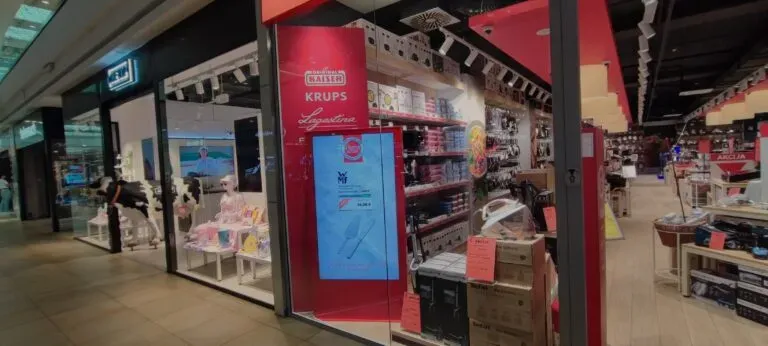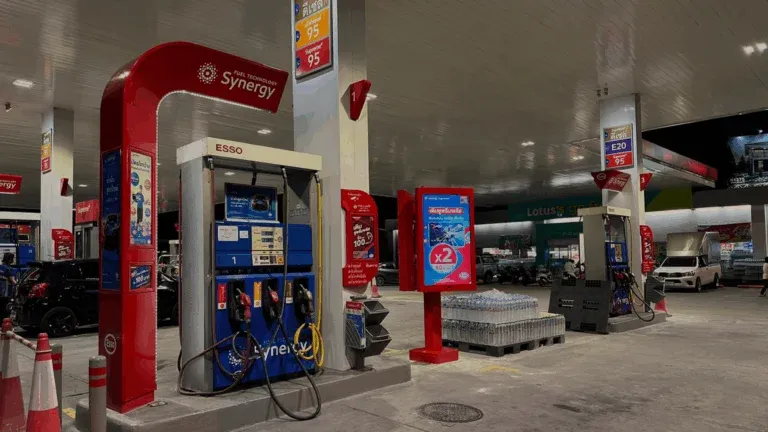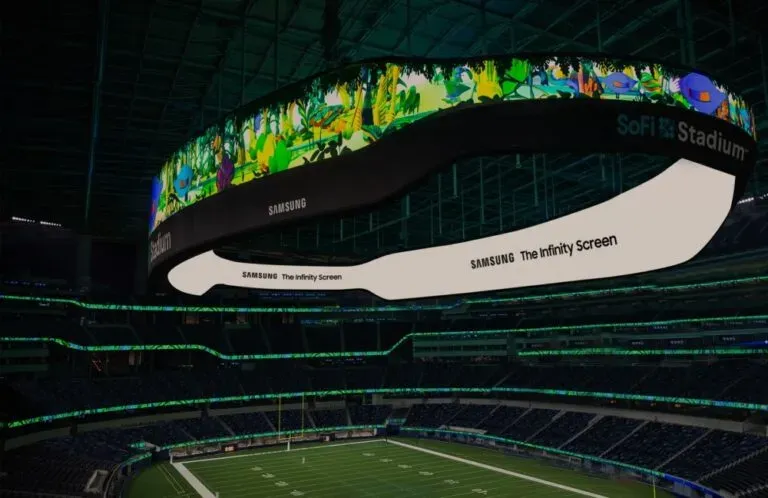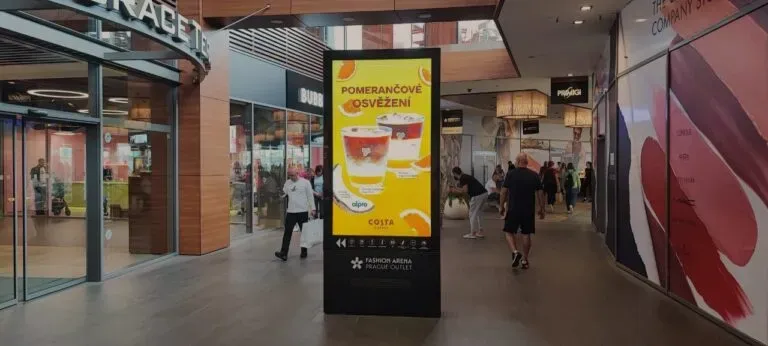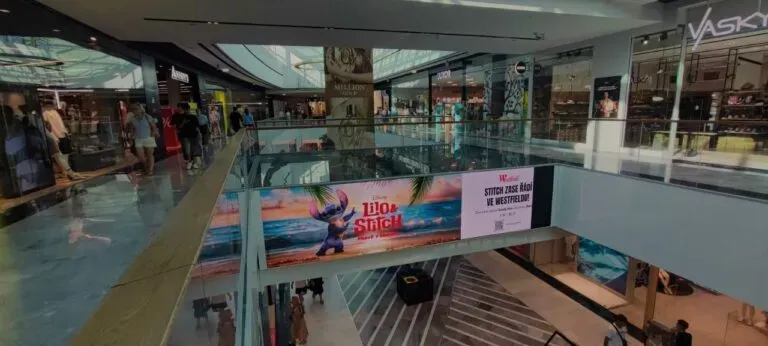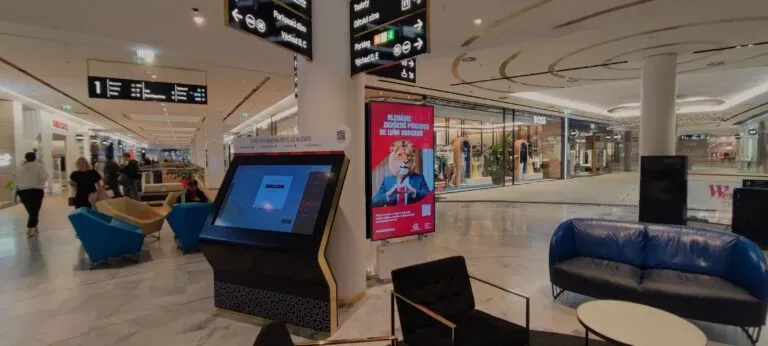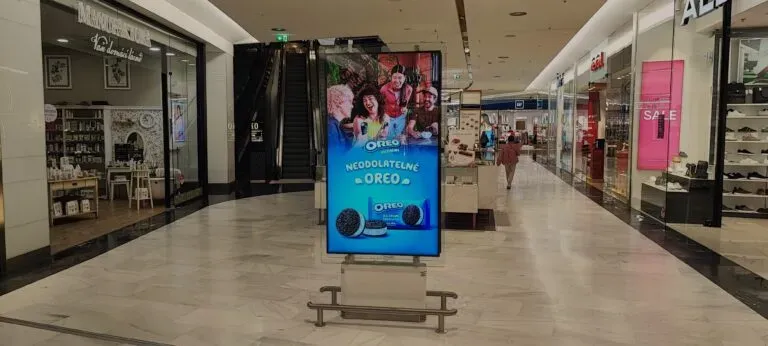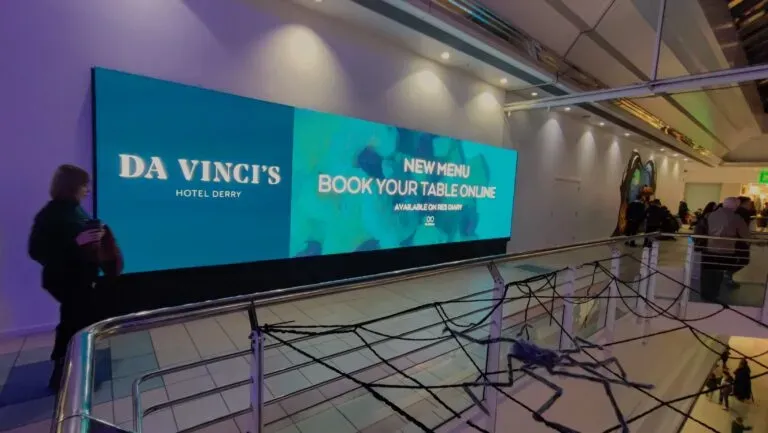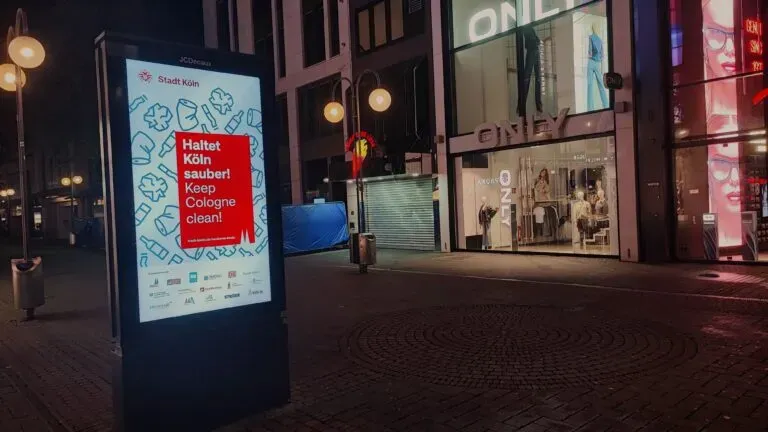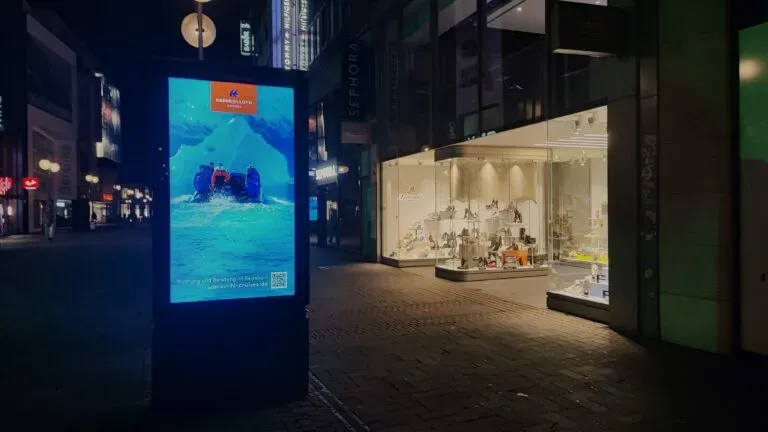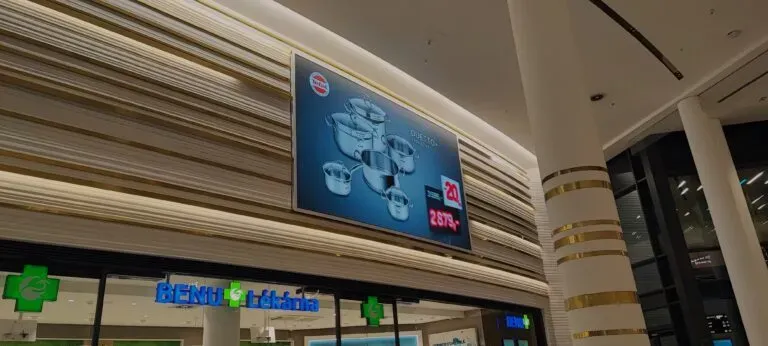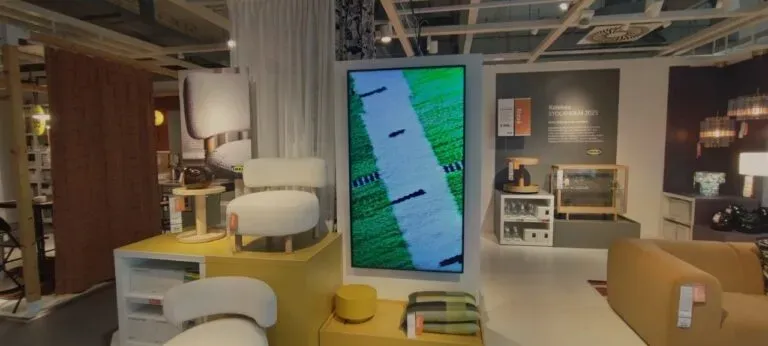Digital advertising: household TVs or commercial displays 24/7?
Quite often, businesses use household TVs for displaying digital advertising because they cost less.
Let’s figure out why it’s better to choose a professional display for commercial use rather than a household TV for advertising in public spaces.
After deciding to install digital signage to grow your business, at some point, you will have to determine which type of screen suits your needs: household TVs or commercial displays.
The answer isn’t always obvious, but in most cases, we recommend opting for a commercial display for showcasing digital advertising and other information, especially if your screens require extended operation in well-lit spaces.
Of course, professional commercial displays are more expensive, but they offer many advantages that justify the higher investment.
Choosing a regular TV as an advertising or informational screen can lead to costly repairs or even the need to purchase new screens.
Key differences between commercial displays and household TVs:
Household TVs are designed for home use. You can find such TVs in any retail store. On the other hand, commercial displays for Digital Signage systems are specifically designed for business environments. Most Digital Signage displays you see in public spaces belong to the commercial category. However, the difference between regular TVs and commercial displays goes much deeper. Here are four key differences that may encourage you to choose commercial displays for digital signage.
Aesthetic
The first thing you’ll notice is the design. Commercial displays for Digital Signage are designed to blend seamlessly with the interior — they have a sleek, industrial, and minimalist design. Household TVs, on the other hand, typically have a more “flashy” appearance and do not always fit harmoniously into a business environment.
Durability
Household TV cases are made of fragile plastic, not built to withstand wear and tear from prolonged use, and are easily damaged. Commercial displays for digital signage are designed for 24/7 operation and are equipped with industrial-grade components that are resistant to impact, dust, and high temperatures. If you need an outdoor screen or a screen for a storefront, a player for digital signage or a Digital Signage player will be your best solution.
Special software for digital signage and digital signage players is used to manage such equipment, ensuring continuous and reliable content playback.
Brightness
Household TVs work best in dimly lit environments because they are designed for residential spaces with low lighting. However, most public spaces or businesses — such as stores, hospitals, shopping malls, and airports — are well-lit. This means that the brightness of a household TV may not be sufficient to provide a clear image. To understand the difference, it’s worth noting that household TVs typically have a maximum brightness of 350 cd/m², while commercial displays in Digital Signage systems can reach brightness levels of 2500 cd/m² or more.
Content
Summarizing the difference in design, it’s important to note that household TVs are inherently designed for displaying TV shows, movies, and video games. Commercial displays, especially in digital signage systems, are primarily designed for remote control of various content: continuous display of static or dynamic text and graphic information, data from external sources, streaming video, web pages, social media feeds, slides, advertising content, and much more. This is just a small portion of the capabilities that Digital Signage technology offers compared to a regular TV.
Built-in media players
If you plan to use video screens for creating a Digital Signage system, you will definitely need a Digital Signage media player for remote transmission and playback of content on each of your advertising screens. Some commercial displays already have powerful built-in media players that can smoothly play content, which is uploaded and managed from your centralized Digital Signage management system. It is impossible to buy household TVs with a built-in media player.
Connectivity
Household TVs are quite limited in terms of connection types. Typically, they only support HDMI, whereas commercial screens offer a wide range of inputs in addition to HDMI, including VGA, DisplayPort, USB, or DVI. Many commercial displays are also equipped with output connectors to transmit video signals to another display, allowing you to create display chains and build video walls without expensive controllers.
Remote management and control
The ability to control displays over a network or RS232 protocol allows owners of professional commercial displays to remotely manage advertising screens from another room, building, city, or even continent. This is a crucial feature as it allows precise control of screen functions via a computer or an integrated Digital Signage management system. Household TVs generally lack this capability or it is significantly limited, whereas most commercial displays support full control via RS232 and Ethernet networks.
Control locking
The last thing you want is for someone to start controlling your screens for their own amusement and at your business’s expense, which can easily happen. All they need to do is use the infrared port on their mobile phone or simply press the buttons on the TV. Or someone might want to display their own content on your screen, which might not always be appropriate. However, commercial screens are protected from such pranks through the locking of the IR sensor, control buttons, and USB ports. This makes display management accessible only to your authorized employees.
Long and continuous 24/7 operation
Unlike household TVs, which are designed for intermittent use, commercial displays are built for long and continuous operation without any issues, thanks to their powerful built-in cooling systems. Household TVs can operate for no more than 6-8 hours a day. Therefore, if you need a display for continuous content playback over extended periods, a professional commercial display is the right choice.
Portrait mode
Household TVs are not designed to operate in a vertical position due to their weak cooling systems and consumer-grade LCD panels. They are likely to overheat quickly and fail. However, commercial displays easily support portrait mode.
Lifespan
The main reason professional displays are more expensive than household ones is their construction. They are made from high-quality industrial components, which ensure a much longer service life. You can expect between 70,000 and 100,000 hours of continuous operation from a commercial display.
Extended warranty period
Commercial displays typically come with a three-year warranty, whereas most household TVs only have a one-year warranty. Moreover, the instructions for household TVs often state that the warranty will be voided if the display is used for commercial purposes.
Professional support
Most warranties for commercial displays include after-sales support from the manufacturer. This is a significant help for organizations that may face issues during installation and operation. Additionally, the warranty for a commercial display usually covers on-site service if repairs are needed. Household TVs generally only cover repairs at a service center, which can be a major issue if you need to transport a 60-inch or larger screen.
To effectively manage digital displays, it’s worth using specialized Digital Signage software. This digital signage software allows for remote control of content playback, ensuring its uninterrupted operation and monitoring the performance of advertising screens.
To increase the efficiency of using digital displays in the commercial sector, it’s important to focus on modern technological solutions. They allow for the automation of content display processes, reducing the need for manual control and minimizing the risk of errors or unauthorized changes. These systems also ensure continuous operation of the displays, allowing for remote monitoring, which is highly convenient for large networked organizations.
In addition, modern displays support high resolution and brightness, making them ideal for use in spaces with varying levels of lighting. They can operate 24/7 while maintaining consistent image quality and avoiding overheating, which is crucial for long-term advertising campaigns or informational panels.
It’s also worth paying attention to the possibilities of integrating such systems with cloud services, allowing for centralized content management from anywhere in the world. This is especially important for large companies with multiple sales points or information centers in different locations.
Advision — Content Management System for remote management and media planning of broadcast video and audio content. We help offline businesses and advertising companies automate workflows and implement a robust Digital Signage infrastructure using our proprietary software and hardware solutions.
Contact us, and we will help you implement the most modern technologies to solve your problems!
Share the news


